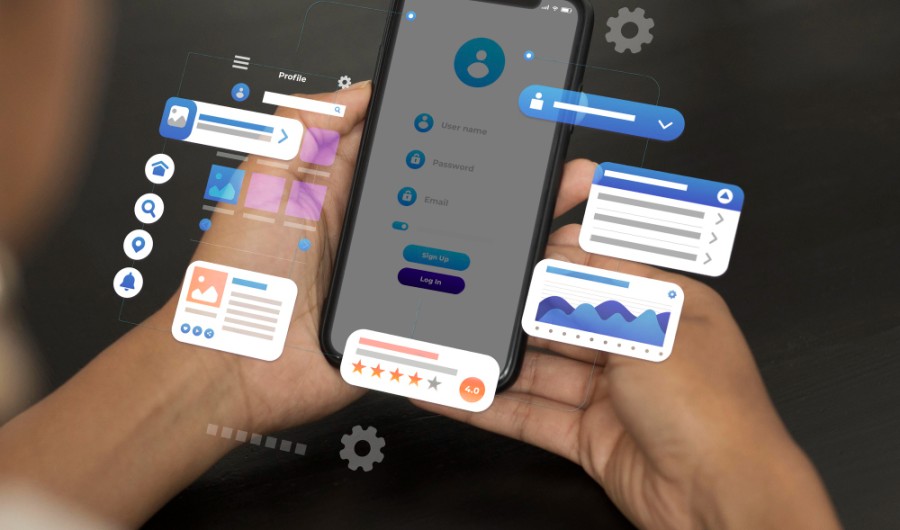
Want to Increase Your Website’s Online Visibility? Try This
So, your product or service excels in quality and offers unparalleled value – positioning your business as a leader in your market. But wait! The challenge arises when potential customers can’t locate you online. Let’s put things into perspective: we live in a world where approximately 1.13 billion websites exist – and only about 200 million are active. The absence of your website in organic search results renders it virtually invisible. And obviously you don’t want that.
The main point is not just having a website – anybody and everybody can do that these days. The aim is to make sure it stands out to potential customers in a crowded online space. In this blog, we will discuss the importance of an online presence and provide practical guidance on how you can make your website more visible on search engines, so as to make your target audience find you with ease.
Be Crawlable
We all work for search engines. Without being friends with search engines, your website won’t stand a chance of being visible online. Search engines like Google find and index your content through a process called site crawling. So, when a search engine crawls your site, it discovers and records web pages so they can be included in the results. And when it doesn’t – well, let’s just say, your great content might never be seen.
Backlinking, for one, is a great way to get the attention of search engines. Backlinks are something like bridges to help search engine crawlers navigate to your website. They don’t only help the crawler find your site; they also act as signals to search engines, telling them that your content is important and, therefore, should be indexed. More high-quality backlinks will mean a better crawl rate and greater visibility of your site.
This is where a tool like The Link Builder comes in handy. It will help you build the kind of backlinks that are essential for improving both your site crawling and visibility.
Here are some other ways to boost your site’s crawlability:
Fix Broken Links: Check your site regularly for broken links and repair them to avoid disruption to the crawling process.
Use Internal Linking: Interlink your service pages and blog posts so that crawlers can navigate your site much more efficiently.
Fresh Content Refresh: Search engines are more likely to crawl your site regularly with fresh content. This improves your chances of getting indexed.
Be Shareable
Social media is not only about connecting with friends and sharing your most relatable memes. It’s also part of the equation to make your website visible online. So, if users share your content on, let’s say, Facebook, Twitter or LinkedIn, this sends a very important signal to search engines. And what’s that? Well, essentially, according to this signal, if people are talking about you, they also want to reach you. And search engines will then work towards making this part easy.
How can you use social media for your benefit, then? Here are some easy tips:
Add Share Buttons: Place social sharing buttons in all your blog posts and other content so that sharing becomes easy.
Shareable Content: Nobody likes to share boring stuff, so create content that you would be interested in yourself.
Engage Your Audience: Pose questions, answer the comments on your blog, and begin polls to create engagement and drive shares.
Be Consumable
Content is king, yes. But high-quality SEO-based content is the kingmaker. When it comes to driving traffic and engaging your audience, quality content does not just drive visitors to your website, but also gives them a reason to come back. Be it through blogs, videos, or info-graphics, the bottom line is to create relevant material that shall be of usefulness to the audience.
Here’s how you can do it:
Create E-E-A-T Compliant Content: Your content needs to be Expert, Authoritative, and Trustworthy. Experience should be added with inclusion of real-life examples or testimonials.
Use User-Generated Content (UGC): Urge your customers to express how they feel about using your products or services. UGC builds trust and engages the customer’s mind.
Mix Up Your Content: Not many people like reading anyway, so provide varieties—like blogs for detailed information, videos for visual learners, and infographics for those who prefer a quick and visually engaging overview.
Be Fast
Site speed plays a major role in how users perceive your website and how search engines rank it. More than delivering a far better user experience, fast loading spells better visibility in search results. Slow sites infuriate visitors and cause high bounce rates that eventually reduce conversions.
Here’s how you can speed up your site:
Optimize Those Images: Compress large files. Dont worry – it will not affect the quality.
Use a Content Delivery Network (CDN): CDNs basically help distribute your site’s content across servers all over the world. a) It minimizes load times b) You streamline your distribution. Win-win!
Enable Browser Caching: Caching retains elements of your site on a visitor’s device to make repeat visits faster.
Consider this: just one second of delay in page load time can reportedly result in a 7% reduction in conversions! Improving site speed is not merely for the sake of better rankings. Directly, it affects your bottom line by keeping visitors engaged and converting.
Be Up-to-Date
Monitoring of the performance of your website consistently is key to keeping visibility high. Tools like Google Analytics give information regarding your traffic, user behavior, and the source of the visitors to your website. Such information will be very instrumental in fine-tuning strategies towards visibility.
Now, let’s see how:
Set up Google Analytics: Track the metrics of interest, such as bounce rates, session duration, traffic sources, etc., and learn from their correlation of what works and what doesn’t.
Stay Up-to-Date With What’s Trending: Keep yourself current with the news in the industry, expert insights and search engines to make sure that SEO strategies are current.
Drive Improvement By Data: Have a close eye on your data to spot any trend and then make smart decisions towards your site’s performance improvement.
For example, Google Analytics will show that the bounce rate is high on your product pages. Making a few changes to the page loading speed and optimization of content can increase sales and promote better visibility in search.
So, there you have it! Don’t sweat it because boosting your website’s visibility doesn’t have to be rocket science. Overly complicated strategies will yield overcomplications. Follow these simple yet effective strategies and you will increase your site’s traffic and reach a wider audience without difficulty. But please keep in mind it’s a marathon, not a sprint. Keep at it and you’ll see results soon.




